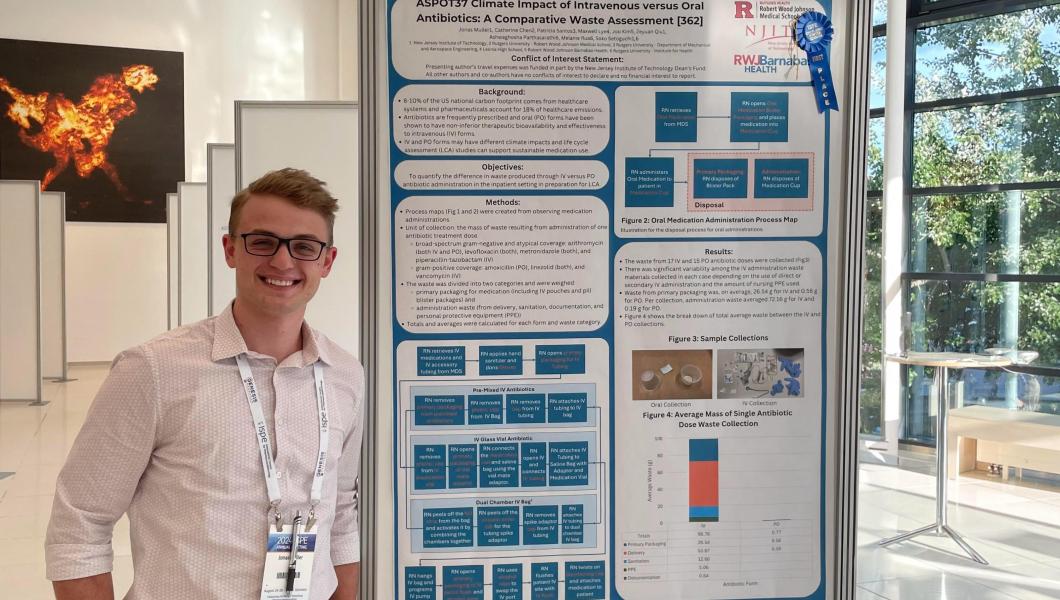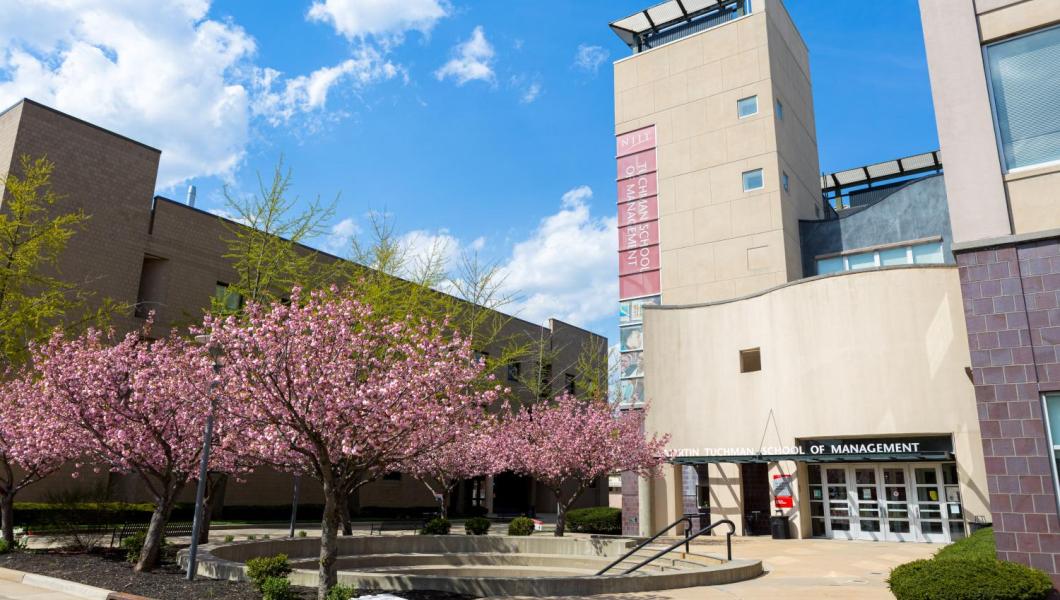Monarchs & Milkweed Selected as Winning Proposal in ADHC First-Year Seminar Biodiversity Initiatives

NJIT’s Albert Dorman Honors College held its First-Year Seminar Biodiversity Initiatives colloquium, in which four student-led proposals were presented to renovate the space near the Summit Street parking garage.
These student-driven initiatives allow for the Urban Ecology Lab, ADHC, the Real Estate Development and Capital Operations (REDCO) and the Office of Sustainability to team up together to make NJIT’s campus into a more sustainable community.
“One of the very cool things about this project is that it helps us as a university become a more sustainable community because we reach out across the teams on campus to bring a whole university together in many ways to accomplish this goal,” said Louis I. Hamilton, dean of ADHC. “I'm very grateful for my colleagues in the Urban Ecology Lab for their participation with us here in the Honors College, for my colleagues in REDCO for supporting us in this process, and for the Office of Sustainability.
“If we're going to be a sustainable community, we have to pool our resources together and work together to be effective,” he added.
In a few decades more than two-thirds of the world’s population will likely live in urban spaces.
Caroline Devan, university lecturer of biological sciences and co-director of UEL, showed during the colloquium an Intergovernmental Panel on Climate Change report, which pointed out that in a few decades more than two-thirds of the world’s population will likely live in urban spaces.
What’s fundamental of the proposals showcased is that it’s important for cities to harbor a lot of nature. “There have been more and more studies in this space, and this is a recent review that actually looked at biodiversity on a variety of college campuses,” said Devan. “And they found that campuses can be a really good place to protect and harbor biodiversity, so this project with the Honors College is promoting urban biodiversity right here in New Jersey.”
All the proposals looked into the possibility of adding more life to a space lacking vividness and color, and the presenting groups characterized garage space as “sad” and “dark.”. The winning proposal, “Monarchs and Milkweed,” emphasized the need to have more native plants on campus and discussed how the milkweed currently on campus is not favorable to monarchs.
The group’s goal is to support endangered insect species, in which the monarch butterflies and bumblebees are specifically considered. They selected and researched different types of native milkweed and decided to divide the planting area into three sections. The planting area will also include agastache and spotted bee balm.
The group decided to select a native milkweed that monarch butterflies favor during reproduction, and plant flowers to attract bumblebees and other pollinators that won't supplant any trees.
Incorporate some of the positive attributes of all the other proposals into the final planting proposal.
“What we’d like to do is incorporate some of the positive attributes of all the other proposals into the final planting proposal,” said Mitchell Gayer, director of environmental health and safety.
Gayer added that one of the things they need to consider is the ground slope. The soil at the site is moist, and due to the amount of underground electrical, natural gas and other utilities in the space, they need to use raised planting beds. By not digging down into the soil, it may help with runoff.
Natalia Peña, a first-year honors scholar majoring in computer engineering, shared why this project was so personal to her. “Monarch butterflies are huge in Día de los Muertos celebrations, which is Day of the Dead for the Mexican culture.
“They symbolize the connection between life and death, and the afterworld and the living world,” Peña said. She also sees them as very symbols of immigration and transgressing borders. Monarch butterflies are known to fly up to 2,500 miles from the U.S. and Canada into the forests of central Mexico. “They're the best of being Mexican and American, which is a thing that a lot of Mexican-Americans like myself struggle with because they are able to exist in America and in Mexico, without having to stay in one place,” said Peña. “They just go back and forth very fluidly.”
20230208-ADHCBioDiversity-198.jpg

She believes it’s very important to break away from the concept of urban being a city with grime and cars, and instead to include rural elements. It’s important to merge those two things together. “I think one of the things you overlook when you're doing city planning is sometimes we plant trees that we like to look at instead of trees that are beneficial for the environment or plants that are cool, but are invasive species.
“So our focus on native plants was really heavily inspired by the teachings of our first-year seminar class, but then also, our group's revolutionary concept is inspired by these vertical gardens or just green on top of the roof for all the city buildings,” she added. “We really tried to mix a healthy dose of green, integrated with city planning, and we think this is the future. We think that cities eventually one day will be just as green and vibrant as the rural area.”

